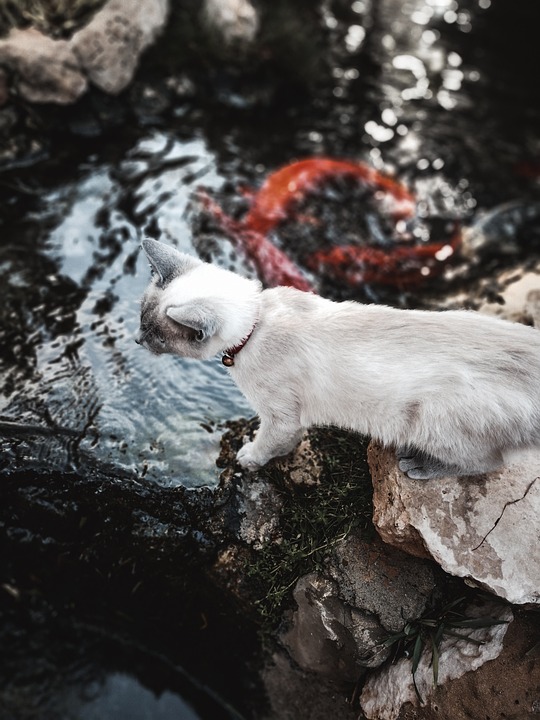Setting up a fish tank with proper lighting for corals is a crucial step in creating a thriving and vibrant marine ecosystem. Corals require specific lighting conditions to grow and flourish, and as an aquarium enthusiast, understanding the importance of proper lighting is essential. In this article, we will guide you through the process of setting up a fish tank with the right lighting for corals, ensuring their health and vitality.
1. Understanding the Lighting Needs of Corals
Before diving into the setup process, it’s crucial to understand the lighting requirements of corals. Corals are photosynthetic organisms that rely on light energy to thrive. They have a symbiotic relationship with photosynthetic algae called zooxanthellae, which live within their tissues and provide vital nutrients through photosynthesis. Therefore, providing the right amount and quality of light is key to their survival.
2. Choosing the Right Lighting System
Selecting the appropriate lighting system is pivotal to providing the ideal conditions for corals. There are several types of lighting systems available, each with its own pros and cons. The most common types are:
– Fluorescent Lighting: This option is cost-effective and suitable for beginner hobbyists. However, it may not provide the intensity required for demanding coral species.
– Metal Halide Lighting: Metal halide lights offer high-intensity illumination and are ideal for tanks with light-demanding corals. However, they generate more heat and consume more energy than other options.
– LED Lighting: LED lights are rapidly gaining popularity due to their energy efficiency, customizable settings, and long lifespan. They provide a wide spectrum of light, allowing for optimal coral growth and coloration.
When choosing a lighting system, consider the specific coral species you plan to keep, as some corals have higher light intensity requirements than others.
3. Calculating the Lighting Requirements
Determining the appropriate lighting intensity for your coral tank is crucial. Light intensity is usually measured in terms of PAR (Photosynthetically Active Radiation), which represents the amount of light available for photosynthesis. Different coral species have varying PAR requirements, so it’s essential to research the specific needs of your chosen corals.
To calculate the required lighting intensity, consider factors such as tank depth, coral placement, and the light’s coverage area. It is recommended to use a PAR meter to accurately measure the light intensity within the tank. Adjust the light fixtures’ height and intensity settings accordingly until the desired PAR levels are achieved.
4. Proper Placement of Lights
Placing the lights correctly within the tank is vital to ensure even light distribution and avoid creating shaded areas. Here are some tips for proper light placement:
– Mount the lights above the tank with adjustable brackets to allow flexibility in adjusting the height as corals grow.
– Position the lights diagonally or parallel to the water surface to prevent excessive light spillage and minimize shadows.
– Use reflectors or lenses to direct light downwards and maximize its penetration into the water.
By strategically placing the lights, you can create an optimal lighting environment for the corals, promoting their growth and overall health.
FAQs: Frequently Asked Questions
Q1: Can I use natural sunlight as a light source for my coral tank?
It’s generally not recommended to rely solely on natural sunlight as the primary light source for a coral tank. Natural light can be inconsistent, and excessive sunlight exposure may lead to excessive algae growth or temperature fluctuations within the tank. Supplementing with artificial lighting is crucial to maintain stable and consistent conditions for the corals.
Q2: How long should I leave the lights on each day?
The duration of lighting depends on the specific coral species and their light requirements. On average, it is recommended to provide 8 to 12 hours of light per day. However, some corals may require shorter or longer photoperiods, so research the lighting needs of your particular corals and adjust accordingly.
Q3: How often should I replace the light bulbs?
Light bulbs, especially those in metal halide and fluorescent lighting systems, tend to degrade over time, resulting in decreased light output and altered spectrum. It is advisable to replace the bulbs every 6 to 12 months, depending on the manufacturer’s recommendations and the bulb’s performance.
Q4: Can I use moonlight or blue lighting for my coral tank?
Moonlight or blue lighting can be used to simulate natural lunar cycles and enhance the visual appeal of the tank. However, it should not be the sole source of light as it lacks the necessary spectrum for coral growth. It is recommended to use moonlight or blue lighting as a supplement during nighttime hours or as an aesthetic enhancement.
Setting up a fish tank with proper lighting for corals requires attention to detail and an understanding of the specific lighting needs of your chosen corals. By providing the right lighting system, intensity, and placement, you can create a thriving marine environment that showcases the beauty of these delicate organisms.









